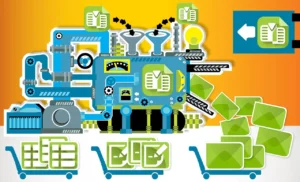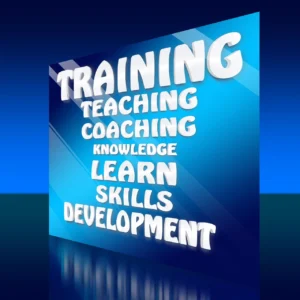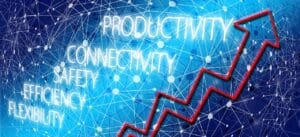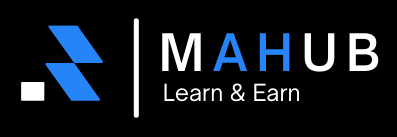Maximizing Digital Productivity: Overcoming Distractions in the Attention Economy
In today’s digital age, the way we work has fundamentally changed. As an online business owner, staying productive is no longer just about putting in long hours—it’s about working smart in the face of constant digital distractions. The rise of the attention economy, paired with the pervasive influence of social media and smartphones, has made digital productivity more challenging than ever.
Understanding how attention has become a valuable resource and how to regain control over it is essential for anyone who wants to thrive in this “always-on” culture. This article explores strategies to maximize digital productivity, focusing on managing distractions and boosting efficiency in our digital lives.

The Attention Economy: A New Era of Digital Productivity
In the digital age, attention is the most valuable commodity. Social platforms such as Instagram, Facebook, and YouTube profit immensely from the time users spend on their sites. These platforms may be free to use, but they generate substantial revenue through ads and user data, turning your attention into their profit. The longer you stay on these platforms, the more they earn—thus creating a system where your attention is constantly being sought after, often at the expense of your digital productivity.
Consider this statistic: in 2019, people checked their phones an average of 29 times a day, a 20% increase from just two years prior. This growing habit of frequent engagement with digital devices, particularly social media, not only eats up our time but also diverts attention away from more meaningful, deep work. Accepting the central role that technology plays in our lives and learning to control its impact is the first step toward improving digital productivity.
The Cost of Digital Distractions: How They Kill Productivity
The Role of Distractions in Reducing Digital Productivity
The constant barrage of notifications, emails, and social media updates is not just an inconvenience—it is a productivity killer. Digital distractions emerge from our “always-on” culture, which creates a false sense of urgency and fear of missing out (FOMO). We often feel the need to stay connected even when we don’t really need to, which leads to a fragmented workflow and scattered attention.
This digital distraction culture is fueled by a constant stream of information, most of which is not crucial to your goals or productivity. Instead of focusing on important tasks, we are constantly drawn to check emails, social media feeds, or respond to messages. This habitual checking of devices reduces our ability to concentrate on high-value tasks, lowering overall digital productivity.

The Illusion of Multitasking
Multitasking is often seen as a skill, but research shows it’s actually one of the biggest productivity myths. While you may think that juggling several tasks at once enhances your efficiency, the reality is the opposite. Multitasking often leads to more mistakes, slower task completion, and a decrease in the quality of work produced.
Tasks can generally be divided into two categories:
- Deep Work: This type of work involves high levels of focus, concentration, and creativity. It is the type of work that creates significant value, such as strategic planning, writing, or brainstorming.
- Shallow Work: These are more straightforward tasks that require minimal focus, such as answering emails, attending routine meetings, or filing documents.
To maximize your digital productivity, it’s important to focus the majority of your time (around 80%) on deep work, while limiting shallow tasks to no more than 20% of your time. This balance ensures you spend your time creating meaningful results, rather than wasting it on menial tasks.
Triggers That Drain Your Focus and Lower Digital Productivity
Several factors can pull you away from focused work and hinder your digital productivity. Let’s look at some of the most common culprits:
1. Constant Notifications: A Hidden Productivity Drain
On average, people receive over 200 emails a day. It’s easy to feel overwhelmed by this constant influx of messages, many of which demand immediate attention. However, each email is an interruption that disrupts your workflow and forces you to refocus, ultimately costing more time than the email itself. Studies show that it can take up to 25 minutes to regain focus after an interruption.
To improve digital productivity, you must be proactive in managing notifications. Start by turning off non-essential notifications on your phone and desktop. Consider setting specific times during the day to check and respond to emails, rather than allowing them to interrupt your workflow. This simple change can significantly boost your ability to focus on deep work.
2. Autoplay and Infinite Scrolling
Features like autoplay on streaming platforms and infinite scrolling on social media are intentionally designed to keep you engaged for longer periods. These features make it easy to get lost in content, which may not even be relevant to your work or goals. Before you know it, hours have passed, and your digital productivity has plummeted.
To regain control of your time and maximize digital productivity, consider disabling autoplay on platforms like YouTube and Netflix. Also, limit your social media use by setting a timer or using apps that restrict your access after a set time limit.
3. Proximity to Devices
Having your phone or other digital devices within arm’s reach, even when you’re not actively using them, can significantly impact your focus. Studies show that the mere presence of your phone can reduce your ability to concentrate on tasks, as your mind is constantly primed to check it for updates.
To increase your digital productivity, create a workspace free from distractions. Place your phone in another room or in a drawer while working, and only check it during designated breaks. By removing these temptations, you can fully immerse yourself in the tasks at hand and maintain a higher level of focus.
4. Working From Home Without Boundaries
The rise of remote work has blurred the lines between personal and professional life. Without clear boundaries, it’s easy for distractions at home to creep into your workday. Whether it’s laundry, dishes, or family members, these interruptions can drastically reduce your digital productivity.
To improve productivity while working from home, create a dedicated workspace that is free from distractions. Set clear boundaries with family members or roommates to ensure uninterrupted work time. Establishing a routine and sticking to it can also help you stay focused and productive, even in a non-office environment.

Practical Strategies to Boost Digital Productivity
Now that we’ve explored the challenges of the digital age, let’s look at some practical strategies to enhance your digital productivity.
1. Time Blocking for Focused Work
Time blocking is a technique where you set aside specific blocks of time for focused work, free from distractions. During these blocks, you focus solely on high-priority tasks, without checking emails or social media. This method is particularly useful for deep work, allowing you to make significant progress on important projects.
For example, you could schedule a 2-hour block in the morning for deep work, during which you turn off notifications, close unnecessary tabs, and focus solely on your most important tasks. Time blocking helps you stay disciplined and ensures that you prioritize what truly matters.
2. Embrace the Power of Digital Detoxes
Sometimes, the best way to improve your digital productivity is to take a break from digital devices altogether. A digital detox involves disconnecting from all screens for a set period, whether it’s a few hours, a day, or even a weekend. This break allows you to recharge and regain clarity, ultimately improving your focus and productivity when you return to your work.
Try scheduling regular digital detoxes, especially during weekends or vacations. Use this time to engage in offline activities, such as reading, exercising, or spending time with loved ones. You’ll return to your work feeling refreshed and more capable of tackling tasks with renewed energy.
3. Use Productivity Tools and Apps
There are numerous tools and apps available to help you stay focused and organized. For example, tools like Trello and Asana can help you organize your tasks and manage projects effectively. Apps like Focus@Will provide background music designed to improve focus, while Forest encourages you to stay off your phone by growing a virtual tree as long as you remain distraction-free.
Explore and experiment with different tools to find what works best for you. The right productivity tools can streamline your workflow and significantly boost your digital productivity.
4. Prioritize Self-Care and Well-Being
Digital productivity isn’t just about managing tasks—it’s also about taking care of your mental and physical health. Burnout and fatigue are real threats to productivity, and neglecting your well-being can lead to diminished focus and efficiency.
Ensure you get enough sleep, exercise regularly, and take breaks throughout the day. A healthy mind and body are essential for maintaining long-term productivity and staying focused on your goals.

Conclusion: Mastering Digital Productivity in the Attention Economy
In the modern digital world, distractions are inevitable, and staying productive can seem like an uphill battle. However, by understanding the attention economy and implementing strategies to minimize distractions, you can reclaim control over your time and maximize your digital productivity.
Focus on minimizing shallow work, prioritizing deep work, and using productivity tools to streamline your tasks. Set boundaries with technology, and don’t forget to take care of yourself along the way. By staying disciplined and mindful of the distractions around you, you can thrive in the digital age and achieve your goals with greater efficiency and focus.
Digital productivity is not about working harder but working smarter—embracing the tools and techniques that allow you to stay focused in an increasingly distracting world.
FAQs
- What is digital productivity?
Digital productivity refers to effectively managing tasks and time in a digital environment to achieve desired outcomes without succumbing to distractions. - How does the attention economy impact productivity?
The attention economy thrives on user engagement, often leading to distractions and reduced focus. Understanding its mechanisms can help regain control over your attention. - What are common triggers for digital distractions?
Notifications, autoplay features, endless scrolling, and proximity to devices are some of the common triggers. - How can I set boundaries while working from home?
Create a dedicated workspace, wear work-specific attire, and take scheduled breaks away from your workstation. - Why is multitasking harmful to productivity?
Multitasking splits focus, reduces efficiency, and leads to mental fatigue, whereas single-tasking ensures better outcomes and a sense of accomplishment. - What tools can help with digital productivity?
Tools like Google Calendar for scheduling and Clockify for tracking time can assist in managing tasks effectively.
Author

Welcome to my blog. I’m passionate about helping people unlock the potential of the internet to achieve financial freedom.Exploring ways to earn money online while balancing my personal and professional life. Over time, I’ve learned the ins and outs of everything from [freelancing, affiliate marketing, dropshipping, blogging etc].I aim to share actionable tips, proven strategies, and honest reviews to guide you in starting or growing your online income. Whether you’re looking to earn a side income or build a full-fledged online business, I’m here to help!


